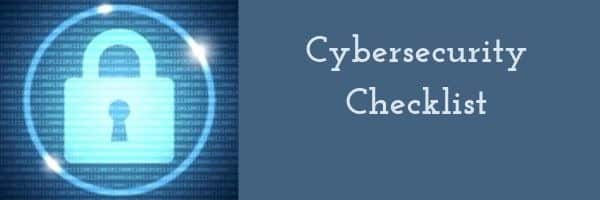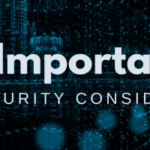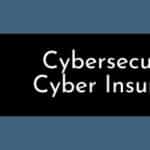The landscape of digital security shifts daily. The continuous shifting leaves even the largest companies scrambling to keep up with current threats. One of the most frequent questions we hear is, how can we keep up with large companies? The answer is with a Cybersecurity Checklist. The checklist is packed full of best practices the largest of companies follow.
Many business owners have the same questions you do. Here are a few more:
- Aren’t we too small to be a target? No – you’re a value target. You’re connected to larger targets that are harder to get. More than 70% of all cyber attacks are against small business to get at the larger companies they are connected to.
- Doesn’t it cost too much to secure us? No – it only costs a few dollars more a month to really up your security posture. When 60% of businesses go under after a breach, and fines going into the millions your business can’t afford to be underprepared.
- What are the first steps to a CyberSecurity program?
We’ve put together a Cybersecurity Checklist for you
Technology Audit
An audit is a real look at your company’s resources and risk factors. Understand what you have, from a technology and people perspective, and the risks associated with loss of data or operations
If you don’t already have a company like us, or your current provider isn’t looking at your weaknesses and strengths at least quarterly, you should have an audit done. This audit should serve as the backbone of your cybersecurity stance.
With a strong understanding of your company’s strengths and weaknesses, you can begin to implement an actionable cybersecurity checklist that will scale as you grow, keeping your business ahead of the data security curve. Each SMB’s checklist will be unique, but these best practices will be integrated into any successful cybersecurity strategy.
Continuous Education on the Latest Threats
All of our software systems constantly evolve to close security. Cybersecurity Education does the same thing. Comprehensive ongoing employee training that evolves alongside cybersecurity are your company’s first line of defense. A lot of training you see is only for phishing. You want to make sure you’re training your employees about any of the regulatory compliances you may be subject to, as well as ransomware, passwords, physical and data security and working remotely, safely. Many regulations require that training be performed at least yearly. Education is one of the most important parts of your Cybersecurity Checklist.
Disaster Recovery & Business Continuity
Having a prepared business continuity plan is a good idea anyway. It’s a set of instructions for your business for when any type of disruption occurs. A disaster recovery plan is the set of instructions that revolves around IT disruptions. The disruption might be a breach, cyber attack or any other type of disruption to your IT. Backup and recovery are critical components of this plan. 3rd element can work with your company to provide a response plan that is customized to your business’ specific needs.
Bring Your Own Device
Most places have some degree of bring-your-own-device (BYOD) policy. Or let you use your own phone for company business. Some businesses only have a written policy, placing the burden on the user to implement mobile security. There are applications now that enforce BYOD policies, require your users to use multi-factor authentication and can give you remote and single sign on ability. All of these save your company money, time, and heartache.
Layer Your Security
Security should always have multiple layers of defense in place. The first line of defense is pcs with antivirus software, but and users need protection, too. Web filtering is another way to keep employees from inviting trouble into your network. These are the base lines for protection. We recommend advanced protective measures for any business with regulated, or proprietary data. The next level of protection is Managed Detection and Response. No one solution but tiered defenses make a business more resilient against cybercrime.
The uncomfortable truth is that, if you don’t invest some time and money to protect your employees and data, a hacker who has the time is going to find and exploit your security gaps. We know from statistical data that a third of your competitors say they prefer not even think about cybersecurity, and less than 15% of small businesses say they’ve mitigated their cyber risks. If you’re still reading this, you’re probably somewhere in the middle. You have some room for improvement and you now have a Cybersecurity Checklist in front of you. Give us a call, get secure, and Consider IT Solved.





